Fatehpur Sikri, a town overshadowed unjustly by the Taj Mahal
Fatehpur Sikri, is a beautiful, historical town near Agra. It has unfortunately been overshadowed unjustly by its more famous neighbor, the Taj Mahal.
On my maiden visit to see the Taj Mahal in Agra, I was quite unimpressed with it. Strange? Maybe, but true. Don’t get me wrong – it is indeed beautiful and awe-inspiring. But the legends and stories behind it seem far-fetched. And some of the history that I have read seem to suggest facts that take away a bit from the much-publicized “eternal love story of a King”. But more on that in a separate blog.
Fatehpur Sikri
This blog is about a place near the Taj Mahal – Fatehpur Sikri in Agra district. It was founded by the Mughal Emperor Akbar in 1571 AD and served as the capital of the Mughal Empire till 1585. It was abandoned by Akbar during his Punjab campaign and then completely abandoned in 1610 AD. The architecture, the history and the legends around this city deserve much more renown… Unfortunately, it is over-shadowed by the romance of the Taj. After all, stories of love find much more favor than histories, don’t they?
The visit is fraught with dangers of the unique kind that the average traveler faces in many countries, especially in India. When I went there, the bunch of self-proclaimed, unauthorized guides who tried to cajole and even threaten me into engaging their services, were a big nuisance. I did see a few tourists succumb to their wiles, but the steely determination of the thrifty South Indian saw me run the gauntlet of wanna-be guides with a smile and a claim of not knowing Hindi… 😉
The tumultuous history of Fatehpur Sikri
Fatehpur Sikri! Doesn’t the name have a ring to it? A ring of intrigue, history and character? And abandoned, truculent grandeur maybe? The name comes from a village called Sikri which was here before Akbar made the place grand… It was a village with houses, temples, commercial structures and the like, occupied by the Sungas and later in the 12th century, the Sikarwar Rajputs, who built a fortress here. Before that, there are traces of this being a major Jain religious and cultural site more than a 10 centuries ago – excavations here have unearthed hundreds of Jain statues (of Bhagwan Adi Nath, Rishabh Nath, Bhagwan Mahavira and Jain Yakshinis) and the foundation stone of a temple.
Akbar & his capital
The Sufi gatherings of the famous mystic Sheikh Salim of Chisti used to happen here. The Sheikh had in fact predicted the birth of Akbar’s son Jahangir who was subsequently born at Sikri in 1569 (Akbar’s son Murad was also born here later). Akbar, in commemoration of the Sheikh and his son’s birth, began construction of a religious building.
Akbar decided to construct a walled city there with a palace. This was when Jahangir turned 2 years of age. He then shifted the Mughal capital to Sikri. The decision was probably not all emotional. A more political reason could be that Akbar brought legitimacy to his rule by aligning himself with this popular Sufi sect of Sheikh Salim of Chisti.
In the meantime, in 1573 AD, Akbar led the Mughals to a victorious campaign in Gujarat. He then renamed the city as Fatehpur Sikri meaning the “City of Victory”. Thus, started the Golden period of the city. Till the Emperor again abandoned the city and shifted out due to various military campaigns, before finally abandoning the city in 1610 AD. The new Mughal capital became Lahore.
The earlier Mughals’ connect
By the way, it isn’t as if Akbar discovered the place. Before him, his ancestors, Babur and Humayun used Sikri as a sort of holiday-home away from Agra – like a largish country house of sorts, I guess… 😉
In fact, Babur loved the place so much that he called it “Shukri”, meaning “Thanks”. This was because the Mughal army found the large lake to be very useful as a water source. The Baburnama, his memoirs, mentions that Babur laid out a garden here to commemorate his victory over Rana Sangha at the outskirts of Sikri. He named it the Garden of Victory (seems like Akbar was following some kind of precedence in naming and construction, what? 😉).
Humayun, not to be left behind, built a pavilion in the garden. This was for relaxing and writing. It was a kind of bachelor-pad to get away from the pressures and pleasures of the harem, I guess…😉
The Glory reflected in the Architecture
Fatehpur Sikri is located on a 3 km x 1 km rocky ridge of sorts. It is hemmed in by a wall on 3 sides and a lake on the other side. This city was designed for leisure and luxury, not war. The unique architecture is modelled on Timurid forms with Gujarati influences. There are also Hindu and Muslim motifs and red sandstone – lots of it. The summer and winter palaces of Akbar’s Rajput wife, Jodha Bai are within the palace in the city. The access to the city is through gates on the massive wall, named quite succinctly as Delhi Gate, Agra Gate, Birbal’s Gate, etc.
The city has many splendid monuments, prime among them being the Bulund Darwaza. This huge 180 feet high gate was built in honor of the victory in the Gujarat campaign that I wrote about earlier. It is quite awe-inspiring in scale and sheer size. It is even more incredible that it has stayed intact after so many centuries, much of it spent in neglect…
Some of the other must-see monuments in Fatehpur Sikri
Religious monuments
Jami Masjid, is one of India’s largest mosques. It was one of the first buildings constructed here.
Ibadat Khana, the House of Worship, where Akbar laid the foundation of Din-e-Ilahi, his beloved idea of a Syncretistic faith, an amalgam of various religions – I wish he had succeeded, don’t you?
The Tomb of Salim Chishti, reflects the revered Sufi Saint’s beliefs with its simplicity. I learnt an interesting point from one of the gents hanging around here. The Saint’s grandson became a general in the Mughal army. His tomb is also located here along with a number of graves of the male descendants of the Shaikh Salim Chishti. This is a place that one cannot visit in shorts – I did and had to rent out a sarong to cover myself. Many who visited Fatehpur Sikri on that day had to suffer the sight of a tall man striving to appear nonchalant while dressed in a striking knee-length sarong, t-shirt and white socks (you cannot wear shoes here and the sun-baked ground was too hot for bare feet unaccustomed to it)… 😉
Official monuments
Diwan-i-Aam, the Hall of Public Audience and the Turkic Baths
Diwan-i-Khas, the Hall of Private Audience, with its central pillar supporting the circular platform for Akbar. The circular platform has 4 stone walkways connected to each corner of the first floor of the building – here Akbar discussed with the representatives of different religions on matters of faith.
Residences and Leisure
Raja Anup Singh Sikarwar built the Anup Talao. It is an ornamental pool with a central platform. Small bridges connect the center. Tansen, the legendary musician, sang his various Ragas here. The Megh Malhaar and Deepaka were ragas that were reputed to be capable of influencing nature.
Akbar’s residence, the Khwabgah (House of Dreams), is near the Anup Talao. The Ankh Michauli is also nearby. This was the place where Akbar delighted in playing hide-and-seek with members of his harem! Bit of a player, our man Akbar… 😉
Hujra-i-Anup Talao, a small house that is reputed to be the house of Akbar’s Muslim wife.
The Gujarati-architecture-influenced Mariam-uz-Zamani’s Palace built around a courtyard, which is where Akbar’s Rajput wives (including Mariam-uz-Zamani).
Naubat Khana (Naqqar Khana), the drum house, located near the Elephant Gate, where drummers heralded the arrival of the Emperor.
Pachisi Court, a large board game with people as playing pieces (similar to Ludo).
Panch Mahal, Hiran Minar, the Taksal (mint), Daftar Khana (Records Office), Karkhana (workshop), Khazana (Treasury), Hamman (Turkic baths), etc., are other important monuments to see.
Birbal’s House looks very different from the rest. This is possibly because he was a Hindi and Akbar’s favorite minister.
The Dak Bungalow built by Lord Curzon is also worth a visit, especially for the view of Sikri village.
The Abandonment of Fatehpur Sikri
The town enjoyed huge royal attention and budgets for construction. Then why abandoned it? The dwindling water supply could be a reason. Or maybe it was simpler – maybe he abandoned it on a whim, just like he occupied it on a whim…
After abandoning it, Akbar visited it only once in 1601. Jahangir stayed here for longer, about 3 months, in 1619 during the bubonic plague from 1616-1624. Muhammad Shah also stayed here for a while. He started repairs, but not for long. The power of the Mughal empire started dwindling. And the city again fell back into neglect.
The Rediscovery
The city lost its prominence for many years till Gerard Lake’s British forces used it as a kind of cloak room for their baggage and guns while chasing Daulat Rao Scindia’s army in 1803 while taking over Agra. They then established an administrative center here. The Marquess of Hastings started repair of the monuments there in 1815. The British called the city ‘Futtypore Sicri’ by the way… 😊
Why Fatehpur Sikri over the Taj Mahal?
The story of this city is best amplified by an ancient inscription on an archway of the famous Bulund Darwaza here. It says “Isa, Son of Mariam said: The world is a bridge, pass over it, but build no houses on it…”. Its understandable that the Emperor came and fell in love with the place. This inscription explains why he built it up with love and then abandoned it without a care.
Akbar founded this town on a whim, inhabited it till the whim lasted and then abandoned it on a whim. That’s possibly the reason why this city has an allure for me.
If I were to rename it, I would probably call it “The Emperor’s Whim”. Or maybe that name would suit a nice pub better. Maybe by the time you visit the place, I would have built the pub… And be there to greet you, pretending to be sober… 😉
Getting to Fatehpur Sikri
Fatehpur Sikri is about 40 kms from Agra. Agra is the nearest Airport. The nearest train station is about a km from the city center. Fatehpur Sikri is easily accessible by road from Agra or even Delhi, depending on where you are staying.
Please do spend an entire day exploring Fatehpur Sikri. Be careful with the unauthorized guides – they can be quite insistent. The authorized guides are available near the ticket counter.
Read about some of the other places of historical interest in India. In case culture is of interest, check out the places of cultural interest in India.
India is a many-faceted country. It celebrates the mysterious, cultural, natural, wildlife, spiritual and more… Here is some more information on these facets of India, to help you travel beyond the regular tours and packages to India.
And if you are looking to have interesting experiences around India, Asia, Europe or Africa, visit Beyonder Travel.


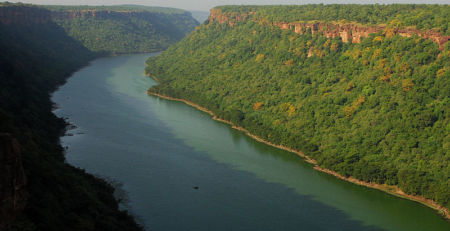
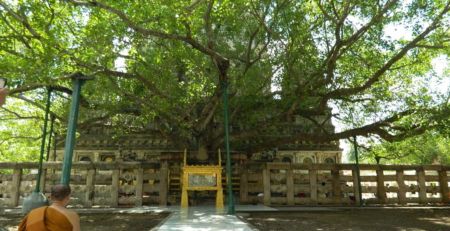
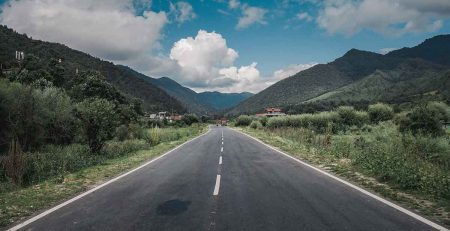
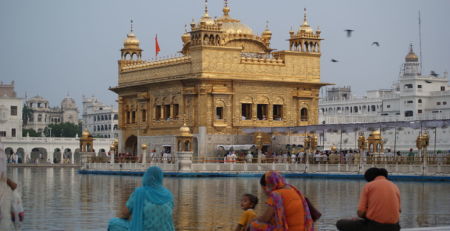



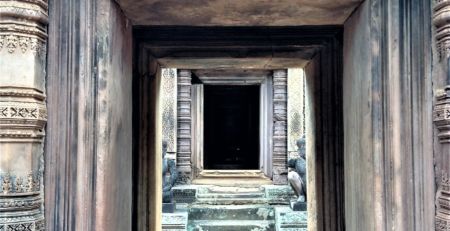

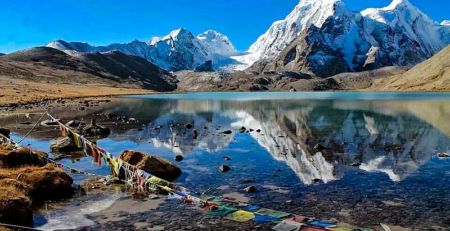
Comments (2)
Hi, Great Post Thanks for sharing,
Regards,
Thanks Dinesh